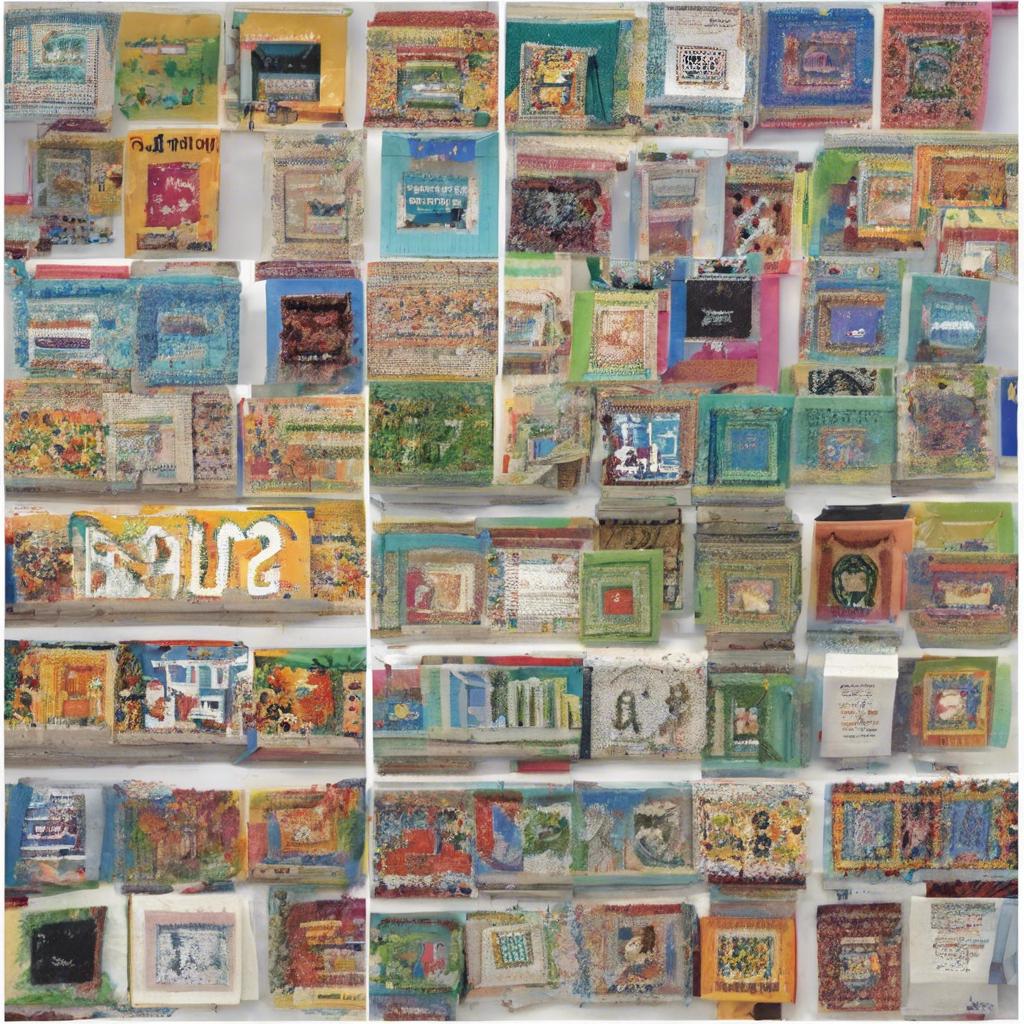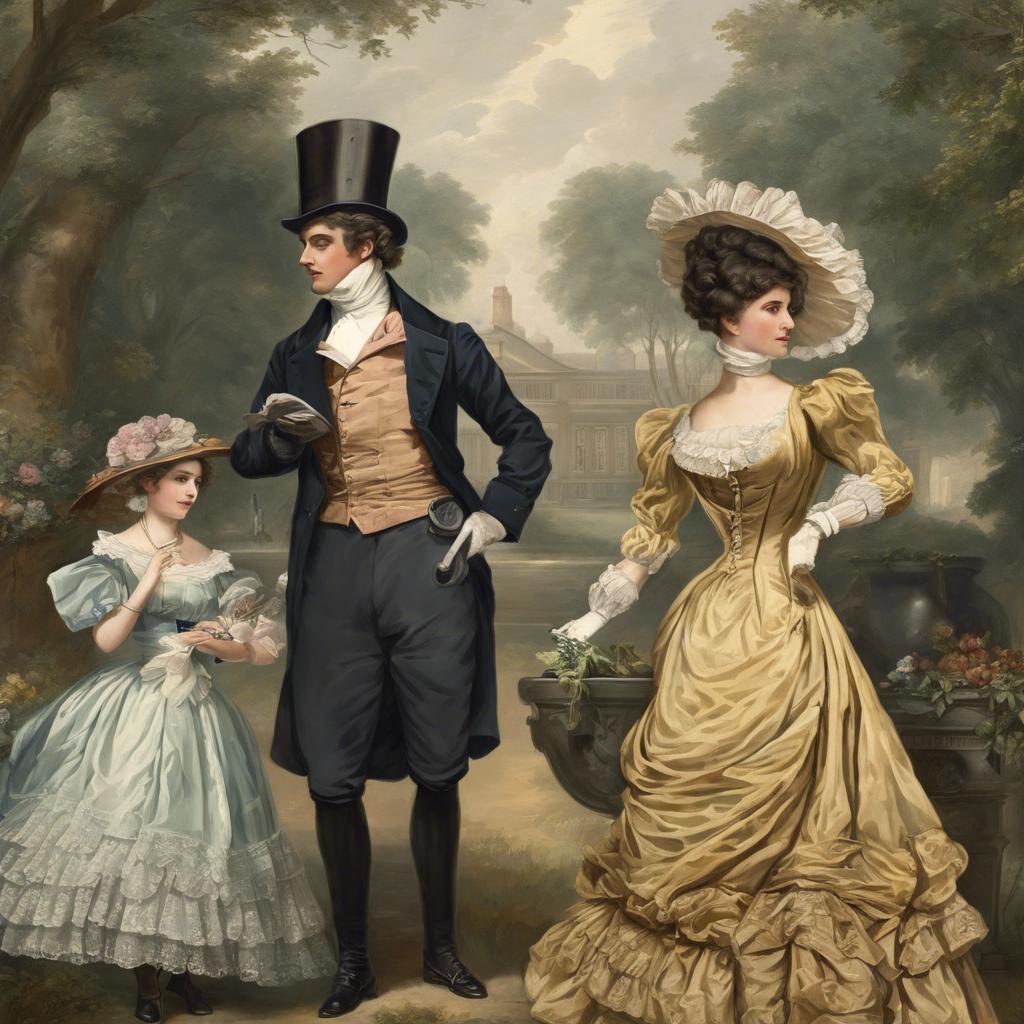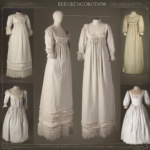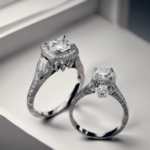In the annals of British history, the Regency and Victorian eras stand out as defining periods of cultural, social, and political transformation. Spanning from the early 19th century through the latter half of the 19th century, these periods witnessed significant shifts in art, architecture, fashion, and societal norms. This article will delve into the intricacies of the Regency and Victorian eras, exploring the key characteristics and influences that shaped these dynamic periods in British history.
Step Into the World of Cheryl Bolen
Dive into the enchanting stories of love, intrigue, and elegance set in the Regency Era. Cheryl Bolen's novels offer timeless romance and captivating tales that will leave you wanting more.
Explore Cheryl Bolen's Books Now
Headings:
In the Regency era, which spanned from 1811 to 1820, England was under the rule of King George IV due to the illness of his father, King George III. This period was characterized by elegance, refinement, and a focus on the arts. Regency fashion was marked by high-waisted dresses for women and tailcoats for men, reflecting the influence of French fashion at the time.
Following the Regency era was the Victorian era, which began in 1837 with the ascension of Queen Victoria to the throne and lasted until 1901. This period was defined by industrialization, social reform, and strict societal norms. Victorian fashion for women included voluminous skirts, corsets, and high-necked blouses, while men sported suits with tailored jackets and trousers.
Despite their differences, both the Regency and Victorian eras were marked by significant advancements in literature, architecture, and technology. Writers such as Jane Austen and Charles Dickens gained prominence during these periods, while the invention of the steam engine revolutionized transportation. The legacy of these eras continues to influence modern culture and society.
Introduction to Regency Era and Victorian Era Fashion
In the Regency Era, which lasted from 1811 to 1820, fashion saw a shift towards simpler and more elegant designs. Women embraced high waistlines, empire silhouettes, and lightweight fabrics such as muslin and silk. The popular “Empire” style dresses featured empire waistlines, which created a flowy and ethereal look. Women also adorned themselves with delicate accessories like gloves, fans, and shawls to complete their outfits.
On the other hand, the Victorian Era, which spanned from 1837 to 1901, was characterized by a more elaborate and structured style of fashion. Women’s dresses during this time featured tight bodices, full skirts, and intricate details such as lace, ruffles, and embroidery. The invention of the sewing machine allowed for more intricate designs, while the use of corsets helped achieve the desired hourglass figure. Furthermore, the Victorian Era saw the introduction of new fabrics like velvet and taffeta, adding richness and texture to garments.
Both the Regency Era and the Victorian Era played significant roles in shaping the fashion trends of their respective time periods. While the Regency Era embraced simplicity and elegance, the Victorian Era showcased opulence and intricacy. The fashion of these eras not only reflected the societal norms and values but also influenced the styles that followed in the years to come. Whether it was the romanticism of the Regency Era or the grandeur of the Victorian Era, fashion during these periods continues to inspire designers and fashion enthusiasts today.
Elegance and Sophistication in Regency Era Clothing
In the Regency Era, fashion was a reflection of the elegant and sophisticated society of the time. Women’s clothing was characterized by empire waistlines, flowing fabrics, and delicate embroidery. The emphasis was on simplicity and grace, with pastel colors and floral patterns being popular choices. Accessories such as gloves, fans, and pearls were essential to complete the look.
Men’s fashion in the Regency Era was equally as refined. Tailored coats, waistcoats, and breeches were standard attire, often made from luxurious fabrics like silk and velvet. Cravats and top hats were key accessories for the fashionable gentleman. The overall silhouette was slim and fitted, exuding a sense of sophistication and class.
The transition from the Regency Era to the Victorian Era brought about changes in fashion, with a greater emphasis on structure and opulence. Women’s dresses became more elaborate, featuring intricate corsets, voluminous skirts, and bold patterns. Men’s suits also evolved, with tailored jackets, waistcoats, and trousers becoming more tailored and structured. The Victorian Era was characterized by a sense of grandeur and extravagance in clothing, reflecting the changing social and cultural landscape of the time.
Evolution of Victorian Era Fashion Trends
In the Regency era, fashion took a dramatic turn from the previous extravagant and ornate styles of the Georgian era. Women’s fashion became more simple and elegant, with high-waisted dresses, empire silhouettes, and delicate fabrics such as muslin and silk. Men’s fashion also underwent changes, with tailcoats, waistcoats, and cravats becoming popular choices for formal attire. The overall aesthetic of the Regency era was one of refinement and sophistication.
As the Victorian era dawned, fashion trends continued to evolve, reflecting the changing societal norms and values of the time. Women’s fashion became more structured and elaborate, with hoop skirts, corsets, and intricate lace detailing becoming the hallmarks of the era. Men’s fashion also saw changes, with frock coats, top hats, and waistcoats becoming essential pieces of a gentleman’s wardrobe. The Victorian era was characterized by its opulent and romantic styles, which were influenced by the industrial revolution and the rise of the bourgeoisie.
The evolution of fashion trends in the Victorian era was not just limited to clothing. Accessories such as gloves, parasols, and fans became important fashion statements, adding a touch of elegance to outfits. Hairstyles also played a significant role in Victorian fashion, with women often sporting intricate updos and curls, while men favored neatly groomed hair and facial hair styles. The Victorian era was a time of innovation and creativity in fashion, with trends that continue to inspire designers and fashion enthusiasts to this day.
Exploring Regency Era and Victorian Era Accessories and Hairstyles
During the Regency Era, women often adorned their hair with intricate updos and accessorized with delicate hairpins and ribbons. Hairstyles were typically swept up in soft curls or twisted into intricate bun designs, reflecting the elegance and sophistication of the period. Accessories such as tiaras, lace veils, and feathered fascinators were also popular choices for special occasions and formal events.
In contrast, the Victorian Era saw a shift towards more elaborate and ornate hairstyles and accessories. Women’s fashion during this time was characterized by the use of intricate braids, voluminous curls, and elaborate hairpieces such as floral wreaths and jeweled combs. Accessories like cameo brooches, pearl chokers, and beaded headbands were commonly worn to complement the opulent hairstyles of the period.
Both the Regency and Victorian Eras placed a strong emphasis on feminine beauty and elegance, with hairstyles and accessories playing a significant role in defining a woman’s style and social status. Whether donning a simple ribbon or an elaborate tiara, women of these eras used fashion to express their individuality and make a statement. Exploring the diverse array of hairstyles and accessories from these periods provides a fascinating glimpse into the fashion trends and cultural norms of the time.
Key Takeaways
the Regency Era and Victorian Era were pivotal periods in British history that witnessed significant social, political, and cultural transformations. From the elegant refinement of Regency style to the industrial and imperial expansion of the Victorian era, these eras provided the backdrop for remarkable developments in literature, technology, and social change. By exploring the unique characteristics and defining features of each era, we gain a deeper understanding of the complexities and intricacies of the past. As we reflect on the legacy of the Regency and Victorian eras, we are reminded of the enduring impact of history and the lasting influence of these remarkable periods on our modern world.


